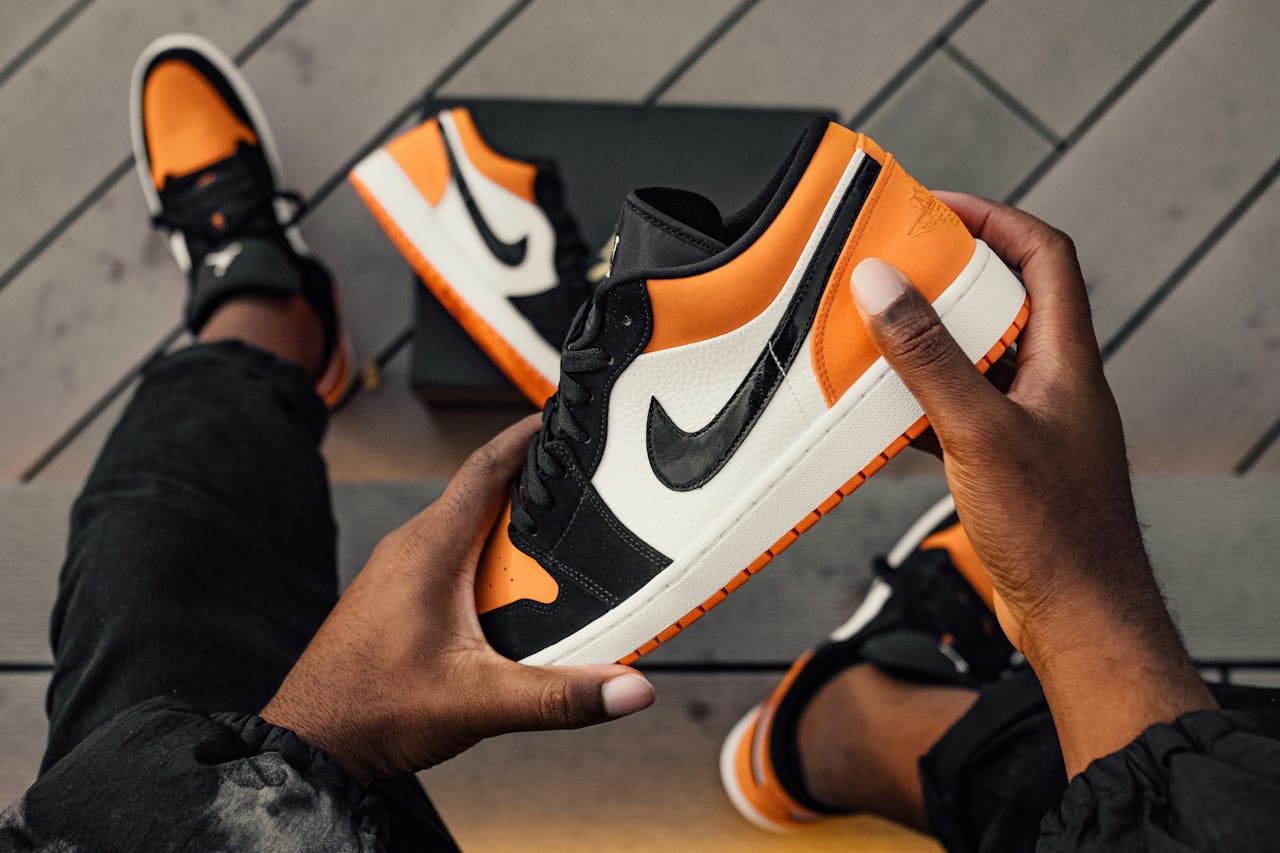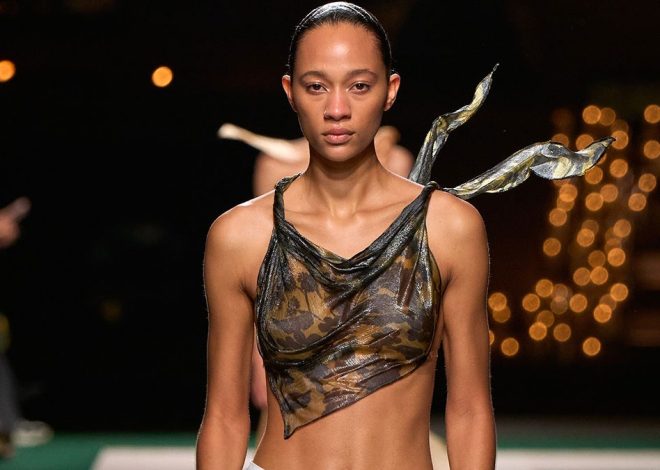
Inside the rise (and coming fall?) of marketing’s infatuation with sneakerheads
Following more collabs and award wins than we can count, as part of The Drum’s Fashion & Beauty Focus, we ask: How did marketers become so obsessed with online shoe fanatics? (And no, it’s not just because they spend loads on shoes.)
Take a look through the last few years of award-winning marketing work and you’ll see one word over and over: sneakerheads, sneakerheads, sneakerheads.
There’s no need for false mystery here: one reason is that these communities are big. On Reddit alone, sneaker communities total over 10 million members, but that’s the tip of an iceberg of blogs, websites, Instagram accounts and IRL groups so big that nobody’s ever bothered to try to measure it. And they spend big, too. Estimates of the global sneaker industry’s size go as high as $90bn, with a resale market of over $10bn.
A 2023 YouGov report cast sneakerheads as a golden goose for marketers: mostly youngish, in command of (and ready to spend) healthy disposable incomes, culturally connected, active on social media, reachable online and receptive to advertising.
But there’s more to it than that. Sneakerheads aren’t just a spending bloc; in recent years, they’ve become tastemakers par excellence for a brand world obsessed with ‘entering culture.’ Brands of almost every sort have come to see these groups as lynchpins of culture, worthy of huge investment to get on-side.
Powered by AI
Explore frequently asked questions
How collab culture took over marketing
Collab culture has all but taken over marketing in recent years, ranging from the revolutionary to the weird and the baffling. Arguably, this collab mania started in sneakers and sneaker collabs remain big business – again, from the profound (think Dior x Air Jordan) to the ridiculous (Adidas x Star Wars’ Chewbacca).
The history of collabs and the sneakerhead world are deeply intertwined, from Converse’s Chuck Taylor All-Stars, whose roots go back to 1922, to Nike’s Air Jordans in 1984 and then on to the collab mania that truly took off in the 90s and 00s.
The sheer range of brands collaborating with sneaker companies isn’t just a gold rush; it’s reflective of the power that marketers think sneakerheads have. Stephanie Hulbert-Thomas, who founded creative agency GangGang and sneakerhead platform Women in Sneakers, says that sneakerheads’ cultural omnivorousness means that “tapping into the community gives you a lot of reach in other areas.”
The sneakerhead is attractive to brands, in other words, not because they buy a lot of shoes but because they’re passionate about things other than shoes. Hulbert-Thomas goes on: “Who we are as people, as individuals, has changed completely. You’re no longer just a sneakerhead. You’re into art, you’re into music, you might be into skateboarding – but you might be more into bread-making. That allows you to be multifaceted when you tap into communities and I think that’s what brands are trying to do when they use communities for marketing”.
(And yes, you’ll find a sneaker collab for each of these – bread-making included. A fun game: go to Google and search “sneaker collab + [a randomly chosen word of your choice]” – you’ll probably find something.)
Advertisement
What kind of sneakerhead are you?
Just like every other corner of media and culture, then, sneakerheadland is atomizing, with smaller niches establishing themselves outside the walls of the more centralized tastemakers that dominated a decade ago. “Sneakerheads are an interesting manifestation of a wider thing,” says Karen Correia da Silva, senior strategy director at ad agency Iris, famed for its longstanding partnership with Adidas. Associations with being young, rich and obsessed with collecting every possible style, have tarnished the sneakerhead reputation, she says, as “being a bit wanky.”
Dodging that charge of wankiness, she says, the ‘community’ has embraced its new heterogeneity. “So sneakerheads are still very much part of the conversation, but they’re not necessarily in a sneakerhead community any more. Whatever aesthetic they’re collecting is part of a wider aesthetic identity. If you’re a sneakerhead who’s collecting Solomon’s, that’s gorpcore. Maybe you wear some Patagonia. You’re into sustainability, you go fishing and camping… If you’re wearing Balenciaga – those giant triple Ss – that’s a different sort of statement; you could be a futurist. There’s a hyper-fragmentation of culture into these groupings, people that are being hyper-segmented, especially through the esthetics of social media. It doesn’t matter, now, if they’re actually a community or not.”
This fragmentation, Correia da Silva says, is reflected in marketing strategy departments. When strategists briefly found themselves in the grip of a kind of quantitative mania, she says, “advertising was becoming very boring because we all had the same data” – a regrettable blip and a “failure of demographic marketing in general.”
Marketing’s approach to the atomized sneakerhead landscape is a microcosm of the swing back in the other direction, “a return to qualitative marketing – you know, listening to people again.” She describes this shift as “a culture change for agencies overall”, signaled by the increased number of ‘cultural strategists’ and even ‘community strategists’ leaning heavily on in-culture ‘fixers’ to broker relationships with smaller, interest-based communities such as sneakerheads.
M&C Saatchi Sport & Entertainment’s Conall McAteer, a creative director, tells The Drum that the core of this new paradigm is a two-way relationship. “Doing it well is about applying bottom-up thinking, not top-down,” he says. “Marketers who understand the power of speaking to communities with authenticity… will be able to speak to their audience in a way that encourages a genuine bond.”
Advertisement
A sneak peak?
For Iris’s Correia da Silva, one upshot of this new era of community marketing is that “it’s the purview of the small, agile agency” – that shops set up with deep knowledge of this kaleidoscopic world of micro-communities and identity groups are poised to continue winning work off some of advertising’s bigger stalwarts.
Luke Hodson, founder of Nerds (exactly the kind of smaller agency Correia da Silva describes), argues that in one sense, the game hasn’t changed at all: in community-based marketing, it’s all about who you choose to work with. For some in this corner of the industry, he says, their passion point – be it shoes or music or make-up brushes – “is more important to them than anything in the world. They don’t get particularly well paid. Their careers are based on proximity to the culture. They sacrifice cash to be so close. It’s dear to them.”
Suggested newsletters for you
Daily Briefing
Daily
Catch up on the most important stories of the day, curated by our editorial team.
Ads of the Week
Wednesday
See the best ads of the last week – all in one place.
The Drum Insider
Once a month
Learn how to pitch to our editors and get published on The Drum.
That won’t change, says Hodson. But the sneakerhead world will. “I think the sneakerhead is, technically, dying,” he says. “Nike’s Snkrs app is doing terribly. Nike is doing terribly. The resale value of product has significantly dropped. Jordan resales are down. It’s almost as if the bottom has fallen out. Sneaker apps are failing. The pinnacle sneaker stores are doing terribly. It’s just not as cool any more – the distribution model has killed it. Bots [buying up shoes to sell them at a markup on the grey market]. Hype culture is becoming seen as distasteful and streetwear culture is trying to shake off that identity.”
Prepare, instead, for the market to get even more atomized, Hodson says. “Collecting is quite a millennial mindset. Young people just aren’t as nerdy about it. People don’t subscribe to these tight bubbles of culture any more – it’s much more fluid. It’s about curation and about being slightly more nuanced. What are the brands they’re into? What’s the music they’re into? Where do they shop? Where are they hanging out? How can we start to show up in each of those different pockets of culture that saturate their identity?”


